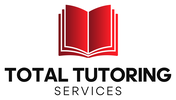|
As the winter chill sets in, students eagerly anticipate the magical time of the year – winter break. This cherished holiday season offers a respite from textbooks and classrooms, providing young learners with the opportunity to create lasting memories with family and friends. Let's explore some delightful ways to make the most of this winter wonderland break for elementary students.
Festive Crafting Fun Encourage creativity by engaging students in festive crafting activities. From making snowflakes and paper snowmen to crafting personalized ornaments, these hands-on projects not only enhance fine motor skills but also add a touch of holiday spirit to their homes. Winter Reading Adventures Winter break is the perfect time to dive into a world of imagination through books. Create a cozy reading corner at home, complete with blankets and pillows, where young readers can explore captivating winter-themed stories. Consider organizing a family book club to discuss favorite reads and foster a love for literature. Outdoor Play in a Winter Wonderland Embrace the winter weather by engaging in outdoor activities. Whether it's building snowmen, having snowball fights, or going sledding, these winter adventures provide a healthy dose of exercise and fresh air. Make sure everyone is bundled up in warm layers to fully enjoy the snowy escapades. Holiday Baking Extravaganza Invite little chefs into the kitchen for a holiday baking extravaganza. From decorating cookies to creating festive treats, this is an excellent opportunity for hands-on learning. Not only does it teach valuable cooking skills, but it also allows for some delicious holiday indulgence. Virtual Winter Celebrations For those spending the holidays apart from extended family or friends, consider organizing virtual celebrations. Plan video calls to share holiday greetings, play virtual games, or even participate in a virtual talent show. Connecting with loved ones digitally can bring warmth and joy during the winter break. Reflect and Set Goals Encourage students to reflect on the past year and set goals for the upcoming one. This reflective practice can be a valuable exercise for personal growth. Whether it's academic achievements, personal development, or acts of kindness, setting positive intentions for the new year can instill a sense of purpose. Winter break is more than just a hiatus from school – it's a time to embrace the magic of the season, foster creativity, and create bonds with loved ones. By incorporating a mix of indoor and outdoor activities, festive traditions, and moments of reflection, families can make this winter break truly memorable for their young learners. As the snow falls and laughter echoes through the winter air, let the joy of the season fill hearts with warmth and delight.
0 Comments
In the realm of education, homeschooling has emerged as a powerful and customizable alternative to traditional schooling. This blog post aims to explore the manifold advantages that homeschooling offers, shedding light on how it empowers students and families to chart their unique educational journeys.
1. Tailored Learning Environments: One of the most significant advantages of homeschooling is the ability to create a tailored learning environment. Homeschooling permits families to adapt the physical space, schedule, and resources to suit the individual needs and preferences of each student, fostering an optimal atmosphere for learning. 2. Flexibility in Curriculum Choices: Homeschooling liberates families from the constraints of standardized curricula. Parents can choose or design a curriculum that aligns with the interests, strengths, and learning styles of their children. This flexibility allows for a more comprehensive and engaging educational experience. 3. Individualized Pace of Learning: In a homeschooling setting, the pace of learning is not dictated by a standardized timetable. Students have the freedom to delve deeply into subjects of interest or take additional time to master challenging concepts, ensuring a more thorough understanding before progressing to new material. 4. Stronger Family Bonds: Homeschooling often strengthens family bonds as parents actively participate in their child's educational journey. The shared experience of learning becomes a bonding activity, fostering open communication and a supportive family environment that extends beyond academic pursuits. 5. Nurturing a Love for Learning: Free from the pressures of grades and standardized testing, homeschooling encourages a genuine love for learning. Students have the freedom to explore topics beyond the traditional curriculum, fostering curiosity, creativity, and a lifelong appreciation for knowledge. 6. Individual Attention and Support: With smaller class sizes (often consisting of one or a few students), homeschooling provides individual attention and targeted support. This personalized approach allows educators to identify and address each student's unique learning style, ensuring a more effective and tailored educational experience. 7. Flexible Scheduling: Homeschooling offers the flexibility to adapt the daily schedule to the needs of the family. This can be particularly beneficial for families with varying commitments, such as travel, extracurricular activities, or unique work schedules. Such adaptability allows for a more balanced and holistic approach to education. 8. Customizing Learning Approaches: Homeschooling recognizes that each student learns differently. Parents can tailor their teaching methods to accommodate diverse learning styles, whether it's through visual aids, hands-on activities, or interactive experiences. This customization ensures that each student receives an education that resonates with their preferred learning approach. As families increasingly explore educational alternatives, homeschooling emerges as a beacon of individualized learning and empowerment. The advantages it offers, from personalized learning environments to fostering a love for knowledge, exemplify the transformative potential of homeschooling. By embracing the flexibility, customization, and nurturing environment that homeschooling provides, families can redefine education on their terms, unlocking a world of possibilities for students to thrive academically and personally. Winter's arrival brings with it the perfect opportunity for middle school students to embark on literary journeys that transport them to magical realms, mysterious adventures, and heartwarming stories. In this curated winter reading list, we present a selection of books tailored to captivate the imaginations of young readers during the colder months. From snowy landscapes to fantastical escapades, these tales are sure to keep middle schoolers entertained and inspired during the winter season.
1. The Chronicles of Narnia by C.S. Lewis: Begin the winter reading adventure with the timeless "Chronicles of Narnia" series. Follow the Pevensie siblings as they step through the wardrobe into the enchanting land of Narnia, where talking animals, mythical creatures, and epic adventures await. 2. Wonder by R.J. Palacio: For a heartwarming and empowering story, "Wonder" by R.J. Palacio is a must-read. Join Auggie Pullman, a fifth-grader with a facial deformity, as he navigates the challenges of middle school, friendship, and self-discovery. 3. Snow Treasure by Marie McSwigan: Based on a true story, "Snow Treasure" takes readers to Nazi-occupied Norway during World War II. Follow a group of brave children as they embark on a perilous journey to save their town's gold and escape the enemy. 4. Harry Potter and the Sorcerer's Stone by J.K. Rowling: Introduce young readers to the magical world of Hogwarts with the first book in the "Harry Potter" series. Join Harry, Ron, and Hermione as they discover the wonders of wizardry and face the challenges that come with it. 5. The Girl Who Drank the Moon by Kelly Barnhill: Winner of the Newbery Medal, this fantasy novel tells the tale of Luna, a girl with a magical destiny. Filled with whimsy and adventure, it's a captivating story that explores themes of magic, sacrifice, and the power of friendship. 6. The Mysterious Benedict Society by Trenton Lee Stewart: Embark on a thrilling and mind-bending adventure with "The Mysterious Benedict Society." Follow a group of gifted children as they undertake a mission to save the world from a mysterious villain. 7. Hatchet by Gary Paulsen: For a gripping survival story, "Hatchet" is a compelling choice. Follow thirteen-year-old Brian as he learns to survive alone in the Canadian wilderness after a plane crash, relying on his wits and resourcefulness. 8. A Wrinkle in Time by Madeleine L'Engle: Take a journey through time and space with Meg Murry in "A Wrinkle in Time." This science fantasy classic combines elements of science fiction with a heartwarming tale of family, friendship, and the battle between good and evil. This winter, let the pages of these captivating books become portals to new worlds, stirring the imagination of middle school readers. From magical realms to heartening coming-of-age stories, this curated reading list is designed to provide young readers with a cozy escape during the winter months. So, grab a blanket, find a comfy spot, and dive into these enchanting tales for a season filled with literary adventures. Happy reading! In today’s fast-paced educational landscape, students often find themselves overwhelmed with a multitude of subjects, assignments, and exams. However, with effective study skills, students can not only manage their workload but also excel academically. In this article, we will explore some practical tips and strategies to help students improve their study skills and maximize their learning potential.
|
|
|
Serving the Greater Baltimore Area, including Baltimore County, Anne Arundel County, Howard County, Montgomery County, Towson, Owings Mills, Reisterstown, White Marsh, Pikesville, Cockeysville, Annapolis, Odenton, Crofton, Gambrills, Severna Park, Davidsonville, Columbia, Clarksville, Laurel, Ellicott City, Silver Spring, Bethesda, Rockville and Potomac.
|
ACT Tutors
Algebra Tutors Biology Tutors Calculus Tutors |
Chemistry Tutors
French Tutors Geometry Tutors German Tutors |
HSPT Tutors
ISEE Tutors Kindergarten Tutors Math Tutors |
Physics Tutors
Reading Tutors SAT Tutors Science Tutors |
Spanish Tutors
Statistics Tutors Test Prep Tutors Writing Tutors |
Total Tutoring Services ©2016





 RSS Feed
RSS Feed